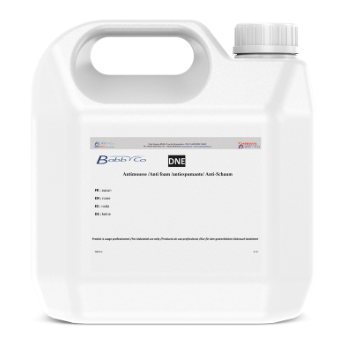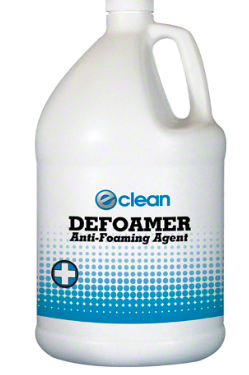Last Updated on November 25, 2022 by mdmtool
There are a few key differences between antifoam and defoamer products. Antifoam products physically prevent foam formation, while defoamer products work . Antifoam products are typically more effective at avoiding foam formation, while defoamer products are by breaking down the existing foam better at breaking down the existing foam.
What Is An Antifoam?

An antifoam is a material used to prevent foam formation or reduce the amount of foam that is already present. Antifoams are used in many industries, including the food and beverage industry, where they help to keep products such as beer and soda from becoming too foamy.
What Is A Defoamer?

A defoamer or an antifoam agent is a chemical additive that reduces and prevents foam formation in industrial liquids. The terms defoamer and antifoam agent are often used interchangeably. Silicone-based defoamers are the most widely used type, followed by mineral oil-based defoamers. Other types include plant-based and polymeric defoamers.
What Is The Difference Between A Defoamer And Antifoam?
- Formation: The main difference between a defoamer and antifoam is that a defoamer breaks down existing foam while antifoam prevents the formation of new foam.
- Agent: The main difference between an agent in a deformer and antifoam is that an agent in a deformer breaks down the existing foam. In contrast, the antifoam prevents the formation of new foam. In other words, an agent in deformer solves a problem that has already arisen, while an antifoam is used to prevent a problem from happening in the first place.
- Spreading Ability: Another difference between a defoamer and an antifoam is that the defoamer has an excellent spreading ability while the antifoam has a poor spreading ability. This is because the defoamer is designed to break down the existing foam, so it needs to be able to spread through the liquid and reach the foam quickly. On the other hand, the antifoam is designed to prevent new foam from forming, so it doesn’t need to spread as quickly.
- Processing: A defoamer is added during the processing of a product, while an antifoam is added before the product is processed. Defoamers are available in many forms, including oil-based, water-based, and silicone-based.
- Cost: Antifoam products are usually more expensive than defoamer products, but they can be worth the investment if you need to prevent foam from forming in the first place.
Uses Of Antifoam
The primary purpose of antifoam is to reduce or prevent foaming in industrial processes. Foaming can cause several problems, including product loss, process disruptions, and safety hazards. In many cases, a tiny amount of foam can significantly impact operations.
Antifoam is added at low concentrations, typically just a few parts per million. It works by physically breaking up the foam bubbles or inhibiting the chemical reaction that causes foaming. In some cases, both mechanisms may be at work.
Uses Of Defoamer
Defoamers are typically added to systems to help reduce or eliminate foam. They can be used in a variety of industries and applications, including:
- Food and beverage processing: Defoamers are often used in food and beverage processing to help prevent foaming during manufacturing.
- Wastewater treatment: In wastewater treatment, defoamers can be added to help reduce foam and improve the efficiency of the treatment process.
- Paint and coatings: Defoamers are sometimes added to paint and coating formulations to help prevent foaming during manufacturing and application.
- Oil and gas production: In oil and gas production, defoamers help prevent foaming in drilling and production operations.
- Paper and pulp: Defoamers are commonly used in paper and pulp manufacturing to help reduce foam and improve the efficiency of the process.
Types Of Antifoam
- Silicone Antifoams: These are the most common antifoams used in many applications. They are effective over a wide range of temperatures and concentrations.
- Organic Antifoams: Organic antifoams are based on oils, resins, or polymers and are often used in food products. They have a shorter shelf life than silicone antifoams.
- Inorganic Antifoams: Inorganic antifoams are based on metals or minerals and are used in applications where organic materials are incompatible.
- Non-Silicone Antifoams: These antifoams are based on polymers or surfactants and are used in applications where silicone antifoams are incompatible. A defoamer, or antifoaming agent, is a chemical additive that reduces and prevents foam formation in industrial process liquids.
Types of Defoamer
Powdered defoamers are insoluble in water and oil and need to be dispersed in the system before use. A typical product would be a fine, light-colored powder easily dispersed in the system.
- Oil-based defoamers: Oil-based defoamers are designed to be insoluble in water but soluble in oil. These products are typically used in metal working fluids, hydraulic, and other industrial oils.
- Water-based defoamers: Water-based defoamers are designed to be insoluble in oil but soluble in water. These products are typically used in coolants, cutting fluids, and other water-based systems.
- Silicone defoamers: Silicone defoamers are designed to be insoluble in both oil and water. These products are typically used in applications where oil and water are present, such as emulsions, latex paints, and adhesives.
Why Do Air Bubbles And Surface Foam Occur?
The main reasons for the formation of air bubbles and surface foam are:
- Dissolved gases in the liquid (usually air) come out of the solution.
- Fine solid particles (usually from suspended solids or surfactants) act as sites for bubble nucleation;
- Surface active agents (surfactants) lower the surface tension of the liquid, promoting the formation of bubbles.
- The temperature of the liquid is too high or too low, causing changes in the solubility of gases and surfactants.
FAQs
Is a defoamer a surfactant?
No, A defoamer is an agent that breaks the surface tension of a liquid, which allows entrained air to be released in the form of tiny bubbles.
Conclusion
The main difference between an antifoam and a defoamer is that an antifoam prevents foam formation while a defoamer breaks down the existing foam. Foam is an essential issue in many industries since it can cause problems with production, transportation, and end products. Antifoams and defoamers control foam and keep it at acceptable levels.





